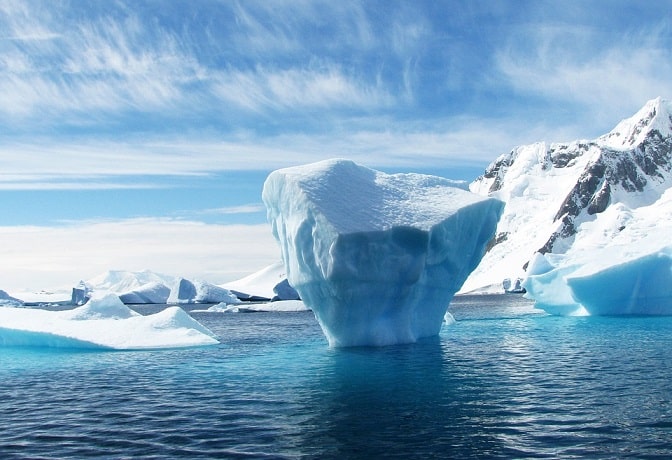Smaller icebergs that are less than two square kilometres across will drift away from the shelf from which they broke off and out of coastal waters within a few months, blown out into the open sea by the wind where they will break up and eventually melt over two or three years.
Large icebergs, on the other hand, are not affected by the wind and are primarily driven by their own weight and by the fact that the surface of the Southern Ocean is not flat, but rather leans typically to the north.
According to Thomas Rackow, a climate modeller at the Alfred Wegener Institute in Bremerhaven/Germany and first author of the new study, “When large icebergs drift, they initially slide down the inclined ocean surface, but not along a straight line; they tend to veer to the left. This is due to the Coriolis force, which is a consequence of Earth’s rotation and ultimately puts the icebergs on a course parallel to the coast, one similar to the Antarctic Coastal Current.”
Polar researchers around the globe are currently watching the Antarctic Peninsula, where it is expected that a massive iceberg on the Larsen C Ice Shelf, which has already begun to break off from the rest, will be in the region of 175 kilometres long and 50 kilometres across at its widest point once it eventually parts from the shelf. This equates to nearly 6,000 km2 and 1,300 gigatonnes (nearly as much as all of the new icebergs formed in the Antarctic in the course of an average year).
Large icebergs like this will linger near the coast for the first three or four years, only moving out to the open sea once the Antarctic Coastal Current leads them away from the coast or they become trapped in pack-ice that is subsequently blown out to sea. This results in even the large tabular icebergs ending up in more northerly ocean regions with warmer water.
Once in warmer waters these icebergs will start to melt from the bottom and follow one of the four “highways” that transport all floating ice in the Antarctic northwards, landing up in diverse areas from the Atlantic to the coasts of South America and New Zealand.
The Larsen C iceberg is expected to most probably drift for about a year through the Weddell Sea, along the coast of the Antarctic Peninsula then most likely follow a north-easterly course, heading roughly for South Georgia and the South Sandwich Islands. Rackow predicts that the Larsen C iceberg will likely survive for eight to ten years.
Get bottled water coolers and plumbed water coolers from Living-Water.






